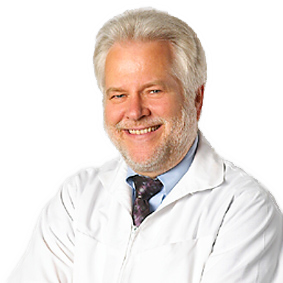
In chiropractic philosophy, the human body is viewed as a self-regulating, self-healing organism, governed by an intrinsic wisdom known as innate intelligence. This innate intelligence uses the nervous system as its primary communication network, coordinating every cell, tissue, and organ in the body.
When the nervous system functions without interference, the body can adapt, repair, and thrive. But when nerve communication is disrupted—often due to spinal misalignments or subluxations—health deteriorates. Chiropractic care aims to remove these interferences, restoring the body's innate capacity to heal itself.
What Is Innate Intelligence?
Coined by chiropractic founder D.D. Palmer, innate intelligence is defined as:
“The inherent wisdom of the body that governs the function of every living cell through the nervous system.”
While not a term used in conventional science, innate intelligence aligns with the concept of homeostasis—the body’s built-in capacity to regulate internal balance and healing without conscious effort.
Examples of innate processes:
- Wound healing
- Immune responses
- Hormonal regulation
- Organ coordination
All these rely on neural communication and are orchestrated with no conscious input from the individual.
The Nervous System: The Body's Communication Superhighway
1. Central Nervous System (CNS)
- Includes the brain and spinal cord.
- Controls both voluntary (movement, speech) and involuntary (heart rate, digestion, immune responses) functions.
2. Peripheral Nervous System (PNS)
- Includes all nerves branching from the spinal cord to muscles, organs, and glands.
- Enables constant feedback between the body and brain.
“Every function of the human body is under the control of the nervous system.”
— Gray's Anatomy, 29th Edition
In chiropractic terms, this system is the conduit for innate intelligence—the way the body’s wisdom communicates and carries out instructions to maintain health.
🩻 What Are Subluxations?
A subluxation, in chiropractic terminology, is a misalignment or restriction in the spine that interferes with nerve function. Though not always detectable on standard medical imaging, subluxations may:
- Cause abnormal motion or pressure on spinal nerves.
- Disrupt communication between the brain and the body.
- Lead to dysfunction in the corresponding organ or tissue.
“When vertebrae become misaligned, nerve impulses may be altered, affecting the tissues supplied by those nerves.”
— Gatterman, M.I., Foundations of Chiropractic: Subluxation
Scientific Support for the Nervous System’s Role in Health
• Autonomic Nervous System (ANS) Regulation
The ANS controls functions like digestion, heart rate, immune response, and stress adaptation.
Chiropractic adjustments have been shown to:
- Reduce sympathetic (stress) dominance
- Improve parasympathetic tone (rest, repair)
- Enhance heart rate variability (a marker of resilience)
Study: Chiropractic spinal adjustments were associated with improved HRV and autonomic balance.
(Luchetti et al., Journal of Electromyography and Kinesiology, 2020)
• Neuroimmune Interaction
The nervous system regulates immune function through neurotransmitters and neuropeptides.
“Neuroendocrine pathways and autonomic innervation play an essential role in immune modulation.”
— Science Immunology, 2020
Chiropractic research also supports this:
“Spinal adjustments can enhance immune-related biomarkers, such as IgA and leukocyte counts.”
(Coulter et al., Journal of Chiropractic Medicine, 2008)
Real-World Applications: How Chiropractic Helps the Nervous System
Chiropractic adjustments have been shown to:
- Restore motion and alignment to restricted vertebrae.
- Reduce nerve interference and promote neural homeostasis.
- Improve posture and reduce tension on the spinal cord and meninges.
- Support better coordination between brain and body (neuroplasticity).
Example: A 2016 study found cervical adjustments led to changes in brain activity, including the prefrontal cortex, suggesting chiropractic care may influence executive function, stress regulation, and movement planning.
(Haavik et al., Journal of Neural Plasticity)
Chiropractic and the Brain-Body Connection
Modern neuroscience confirms what chiropractors have long taught: the spine is not just a stack of bones—it is a dynamic, sensory-rich structure that influences brain function.
The spine provides:
- Proprioceptive feedback to the cerebellum (balance, coordination)
- Afferent signals to the brainstem and cortex
- Stimulation of neurochemical pathways that regulate mood, immune function, and inflammation
A disrupted spine means a distorted brain-body conversation—exactly what innate intelligence seeks to correct through chiropractic adjustment.
Conclusion: The Nervous System and Health Are Inseparable
Chiropractic care centers on the truth that a properly functioning nervous system is the foundation of health. When the nervous system is clear of interference, the body can express its innate intelligence—promoting healing, adaptation, and vitality.
Regular chiropractic adjustments aren’t just for pain relief—they’re for nervous system optimization, allowing your body to function the way it was designed.
“The preservation of health is easier than the cure of disease.”
— B.J. Palmer
References
- Gray, H. Gray's Anatomy, 29th Edition.
- Gatterman, M.I. Foundations of Chiropractic: Subluxation.
- Luchetti, R.G. et al. (2020). Chiropractic adjustments and heart rate variability. J Electromyogr Kinesiol.
- Haavik, H. et al. (2016). Spinal manipulation affects brain function: A neural plasticity perspective. Neural Plasticity.
- Coulter, I.D. et al. (2008). Immunological markers and chiropractic care. J Chiropr Med.
- Ader, R., Cohen, N. (2001). Psychoneuroimmunology. Annual Review of Psychology.

